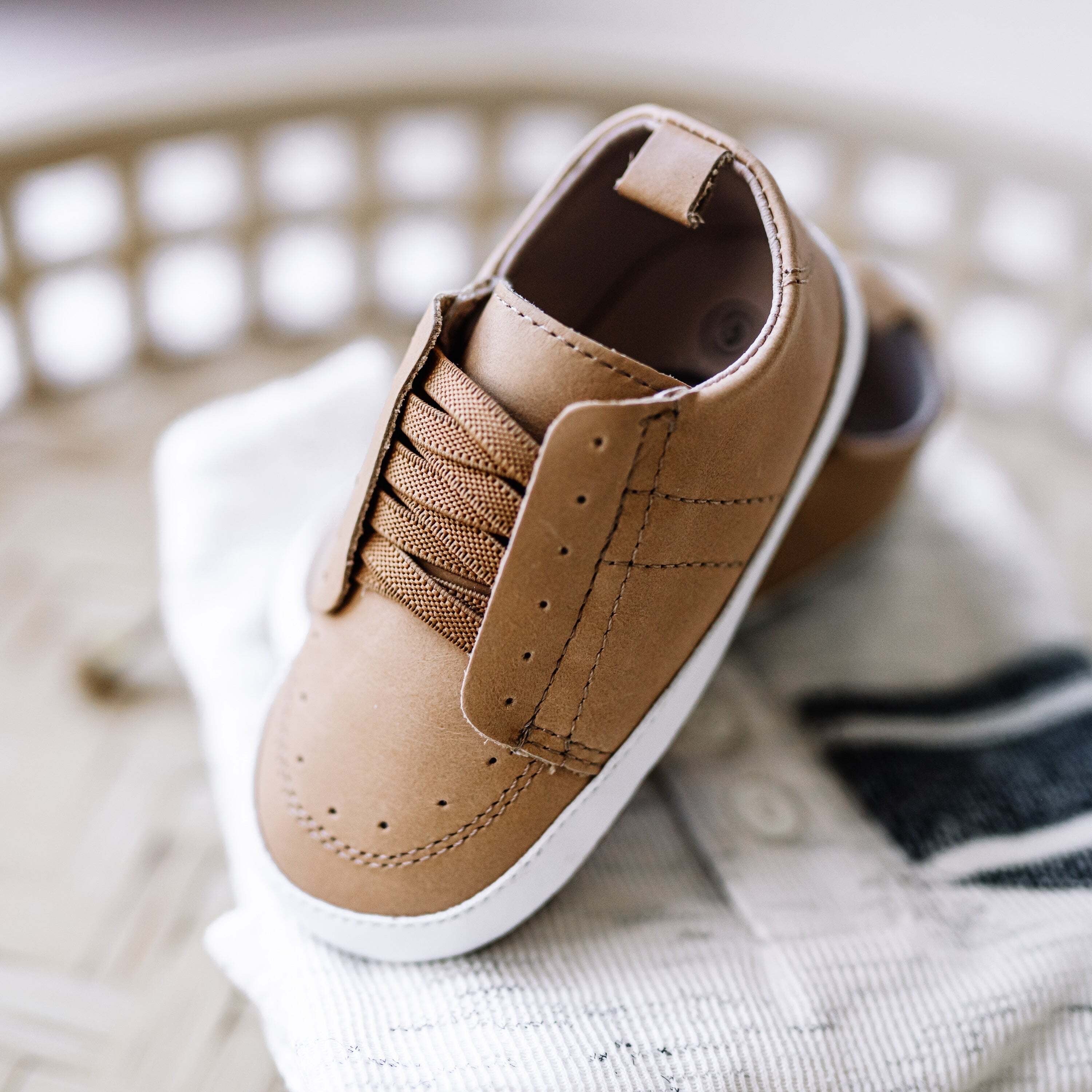Get Your Post-Baby Body Back: How to Rebuild Your Abdominals After Giving Birth
Having a baby is a wonderful experience, but it can take a toll on your body. After giving birth, your postpartum body may need some extra help to get back in shape, especially your abdominals. This blog post will provide tips and exercises to help you rebuild and strengthen your abdominals after giving birth. With these strategies, you'll be able to get your pre-baby body back in no time.
Understanding Diastasis Recti
As a new mom, you may be eager to rebuild your pre-pregnancy body. One of the most common issues women experience post-partum is diastasis recti, which occurs when the abdominal muscles separate during pregnancy. It’s important to understand what diastasis recti is before you work out and attempt to rebuild your abs after giving birth.
Diastasis recti is caused by increased pressure on the abdomen during pregnancy, which causes the outermost layer of abdominal muscles (the rectus abdominis) to separate down the center. This can cause weak core muscles and a pooch or protruding stomach that is difficult to get rid of with traditional exercises. As you rebuild your abdominals, it’s important to keep in mind that the abdominal wall needs time to heal and readjust after the separation.
Fortunately, there are exercises that can help reduce diastasis recti and help new moms rebuild their abdominals. Doing specific exercises can help activate the deep core muscles and help you gain strength and regain your pre-pregnancy stomach. It’s best to start slowly and build up from there as your abdominals heal and become stronger.
Pelvic Floor Exercises
Pelvic floor exercises are important for rebuilding your abdominal muscles after giving birth. The pelvic floor muscles help to support the organs in your pelvis, and when these muscles are weakened they can lead to problems like stress incontinence and pelvic organ prolapse. Strengthening these muscles will help you to get back in shape and regain control over your bladder.
Start by lying on your back with your knees bent. As you breathe out, use the muscles around your vagina, anus and urethra to draw up the pelvic floor and hold the contraction for as long as you can. As you breathe in, relax the muscles and allow them to release. Repeat this work out 8-10 times per session, 3-4 times per day. You should feel a lifting sensation as you contract and a gentle lowering sensation as you release.
In time, you should be able to increase the duration of each contraction and eventually even try different exercises like Kegels, in which you squeeze and hold the same muscles for five seconds before relaxing them again. With regular practice, you will notice your pelvic floor become stronger and more toned over time.
Transverse Abdominis Exercises
Your transverse abdominis (TVA) is a deep layer of abdominal muscles located beneath your rectus abdominis and obliques. It wraps around the midsection and plays an important role in stabilizing your spine and core muscles. Strengthening your TVA can help to restore postural stability and abdominal strength after giving birth.
1. Bird Dog: Begin on all fours with your hands directly below your shoulders and your knees directly below your hips. Slowly extend one arm out in front of you while simultaneously extending the opposite leg back behind you, keeping them level with the floor. Hold for 3-5 seconds, return to start, then repeat on the other side. Do 10 repetitions on each side.
2. Plank: Begin in a prone position with your elbows directly beneath your shoulders, forearms flat against the ground, and toes tucked underneath. Tighten your abdominal muscles and hold for 15-30 seconds, then relax for 15-30 seconds before repeating the exercise. Perform 3-4 repetitions.
3. Heel Drops: Lie on your back with your knees bent and feet flat against the floor. Gently lift both heels off the ground and raise your pelvis up towards the ceiling. Slowly lower both heels to the floor while keeping your abdominal muscles tight, then lift your pelvis back up towards the ceiling. Repeat 10-15 times.
These exercises are designed to help strengthen and tone your TVA, improving stability and support throughout your entire abdominal region. To ensure that you’re doing them correctly, be sure to focus on engaging your abdominal muscles throughout each movement. If you experience any discomfort or pain, stop immediately and consult with your doctor or physical therapist.
Rectus Abdominis Exercises
The rectus abdominis muscles are often referred to as the “six-pack” muscles because when they are toned and well-developed, they look like a six-pack. Rebuild your abs post-baby with these rectus abdominis exercises.
1. Bicycle Crunch: Start by lying on your back with your hands behind your head and your legs in the air. Bring your left knee towards your chest and rotate your torso to the left to touch your elbow to your knee. Then switch sides and alternate for 10-20 reps.
2. Leg Raises: Lie on your back and keep your legs straight. Engage your core and lift both legs at the same time off of the floor until they are perpendicular to the floor. Lower your legs until they are about two inches off of the ground and then raise them back up for 10-15 reps.
3. Plank: Begin on your hands and knees with your hands directly below your shoulders. Engage your core and lower yourself so that you are resting on your elbows and toes. Maintain a straight line from the top of your head to your toes and hold the position for 30-60 seconds.
4. Single-Leg Lifts: Begin on your back with one leg extended out straight and the other bent at the knee. Engage your core and lift the straight leg off of the floor until it is parallel with the ground. Return to the starting position and repeat for 10-15 reps before switching legs.
These exercises can help strengthen and rebuild your rectus abdominis muscles after giving birth, leading to a stronger, more toned abdominal area. It is important to always consult with a doctor or physical therapist before beginning any exercise program, especially if you are postpartum.
When to See a Doctor
Giving birth is a huge milestone in any woman’s life, and rebuilding your abdominal muscles can be a difficult journey. It is important to understand when it’s time to consult a doctor or physical therapist for help and advice.
If you are concerned about diastasis recti or have any pain or discomfort in your abdomen, you should seek out medical advice. It is also important to see a doctor if you are not feeling any results from the exercises that you are doing.
Your doctor will be able to assess your abdominal muscles and make sure that you are doing the right exercises for your individual needs. They may also suggest pelvic floor exercises or other treatments to help you rebuild your abdominal muscles.
It is also important to see a doctor if you have any further questions or concerns about rebuilding your abdominal muscles after giving birth. Your doctor can provide advice and support on what steps you should take to make sure you get the best results possible.
In conclusion, rebuilding your abdominal muscles after giving birth can be challenging but it is important to stay informed and ask for help when needed. If you have any concerns, don’t hesitate to contact your doctor or physical therapist for guidance and support.
Try not to beat yourself up
Rebuilding your abdominals after giving birth can be a long and difficult process, and it’s important not to beat yourself up over it. It is natural to feel frustrated and discouraged at times, but try to remind yourself that you’ve been through a major life event and have made an amazing achievement in doing so.
Your body has gone through an incredible transformation, and it’s important to give yourself credit for that. Take time to appreciate the progress you have made rather than getting hung up on any setbacks.
Remember that post-partum recovery is a journey, and you are going to make mistakes along the way. But don’t let those mistakes stop you from continuing to strive for the best possible outcome for your health and wellbeing.
If you ever feel overwhelmed by the process or need help with anything, don’t be afraid to reach out to your doctor or a qualified post-natal fitness professional for guidance. With the right support, rebuilding your abdominals after giving birth can be a rewarding experience that leads to improved overall health and well-being.
Having a baby is a wonderful experience, but it can take a toll on your body. After giving birth, your postpartum body may need some extra help to get back in shape, especially your abdominals. This blog post will provide tips and exercises to help you rebuild and strengthen your abdominals after giving birth. With these strategies, you'll be able to get your pre-baby body back in no time.
Understanding Diastasis Recti
As a new mom, you may be eager to rebuild your pre-pregnancy body. One of the most common issues women experience post-partum is diastasis recti, which occurs when the abdominal muscles separate during pregnancy. It’s important to understand what diastasis recti is before you work out and attempt to rebuild your abs after giving birth.
Diastasis recti is caused by increased pressure on the abdomen during pregnancy, which causes the outermost layer of abdominal muscles (the rectus abdominis) to separate down the center. This can cause weak core muscles and a pooch or protruding stomach that is difficult to get rid of with traditional exercises. As you rebuild your abdominals, it’s important to keep in mind that the abdominal wall needs time to heal and readjust after the separation.
Fortunately, there are exercises that can help reduce diastasis recti and help new moms rebuild their abdominals. Doing specific exercises can help activate the deep core muscles and help you gain strength and regain your pre-pregnancy stomach. It’s best to start slowly and build up from there as your abdominals heal and become stronger.
Pelvic Floor Exercises
Pelvic floor exercises are important for rebuilding your abdominal muscles after giving birth. The pelvic floor muscles help to support the organs in your pelvis, and when these muscles are weakened they can lead to problems like stress incontinence and pelvic organ prolapse. Strengthening these muscles will help you to get back in shape and regain control over your bladder.
Start by lying on your back with your knees bent. As you breathe out, use the muscles around your vagina, anus and urethra to draw up the pelvic floor and hold the contraction for as long as you can. As you breathe in, relax the muscles and allow them to release. Repeat this work out 8-10 times per session, 3-4 times per day. You should feel a lifting sensation as you contract and a gentle lowering sensation as you release.
In time, you should be able to increase the duration of each contraction and eventually even try different exercises like Kegels, in which you squeeze and hold the same muscles for five seconds before relaxing them again. With regular practice, you will notice your pelvic floor become stronger and more toned over time.
Transverse Abdominis Exercises
Your transverse abdominis (TVA) is a deep layer of abdominal muscles located beneath your rectus abdominis and obliques. It wraps around the midsection and plays an important role in stabilizing your spine and core muscles. Strengthening your TVA can help to restore postural stability and abdominal strength after giving birth.
1. Bird Dog: Begin on all fours with your hands directly below your shoulders and your knees directly below your hips. Slowly extend one arm out in front of you while simultaneously extending the opposite leg back behind you, keeping them level with the floor. Hold for 3-5 seconds, return to start, then repeat on the other side. Do 10 repetitions on each side.
2. Plank: Begin in a prone position with your elbows directly beneath your shoulders, forearms flat against the ground, and toes tucked underneath. Tighten your abdominal muscles and hold for 15-30 seconds, then relax for 15-30 seconds before repeating the exercise. Perform 3-4 repetitions.
3. Heel Drops: Lie on your back with your knees bent and feet flat against the floor. Gently lift both heels off the ground and raise your pelvis up towards the ceiling. Slowly lower both heels to the floor while keeping your abdominal muscles tight, then lift your pelvis back up towards the ceiling. Repeat 10-15 times.
These exercises are designed to help strengthen and tone your TVA, improving stability and support throughout your entire abdominal region. To ensure that you’re doing them correctly, be sure to focus on engaging your abdominal muscles throughout each movement. If you experience any discomfort or pain, stop immediately and consult with your doctor or physical therapist.
Rectus Abdominis Exercises
The rectus abdominis muscles are often referred to as the “six-pack” muscles because when they are toned and well-developed, they look like a six-pack. Rebuild your abs post-baby with these rectus abdominis exercises.
1. Bicycle Crunch: Start by lying on your back with your hands behind your head and your legs in the air. Bring your left knee towards your chest and rotate your torso to the left to touch your elbow to your knee. Then switch sides and alternate for 10-20 reps.
2. Leg Raises: Lie on your back and keep your legs straight. Engage your core and lift both legs at the same time off of the floor until they are perpendicular to the floor. Lower your legs until they are about two inches off of the ground and then raise them back up for 10-15 reps.
3. Plank: Begin on your hands and knees with your hands directly below your shoulders. Engage your core and lower yourself so that you are resting on your elbows and toes. Maintain a straight line from the top of your head to your toes and hold the position for 30-60 seconds.
4. Single-Leg Lifts: Begin on your back with one leg extended out straight and the other bent at the knee. Engage your core and lift the straight leg off of the floor until it is parallel with the ground. Return to the starting position and repeat for 10-15 reps before switching legs.
These exercises can help strengthen and rebuild your rectus abdominis muscles after giving birth, leading to a stronger, more toned abdominal area. It is important to always consult with a doctor or physical therapist before beginning any exercise program, especially if you are postpartum.
When to See a Doctor
Giving birth is a huge milestone in any woman’s life, and rebuilding your abdominal muscles can be a difficult journey. It is important to understand when it’s time to consult a doctor or physical therapist for help and advice.
If you are concerned about diastasis recti or have any pain or discomfort in your abdomen, you should seek out medical advice. It is also important to see a doctor if you are not feeling any results from the exercises that you are doing.
Your doctor will be able to assess your abdominal muscles and make sure that you are doing the right exercises for your individual needs. They may also suggest pelvic floor exercises or other treatments to help you rebuild your abdominal muscles.
It is also important to see a doctor if you have any further questions or concerns about rebuilding your abdominal muscles after giving birth. Your doctor can provide advice and support on what steps you should take to make sure you get the best results possible.
In conclusion, rebuilding your abdominal muscles after giving birth can be challenging but it is important to stay informed and ask for help when needed. If you have any concerns, don’t hesitate to contact your doctor or physical therapist for guidance and support.
Try not to beat yourself up
Rebuilding your abdominals after giving birth can be a long and difficult process, and it’s important not to beat yourself up over it. It is natural to feel frustrated and discouraged at times, but try to remind yourself that you’ve been through a major life event and have made an amazing achievement in doing so.
Your body has gone through an incredible transformation, and it’s important to give yourself credit for that. Take time to appreciate the progress you have made rather than getting hung up on any setbacks.
Remember that post-partum recovery is a journey, and you are going to make mistakes along the way. But don’t let those mistakes stop you from continuing to strive for the best possible outcome for your health and wellbeing.
If you ever feel overwhelmed by the process or need help with anything, don’t be afraid to reach out to your doctor or a qualified post-natal fitness professional for guidance. With the right support, rebuilding your abdominals after giving birth can be a rewarding experience that leads to improved overall health and well-being.


